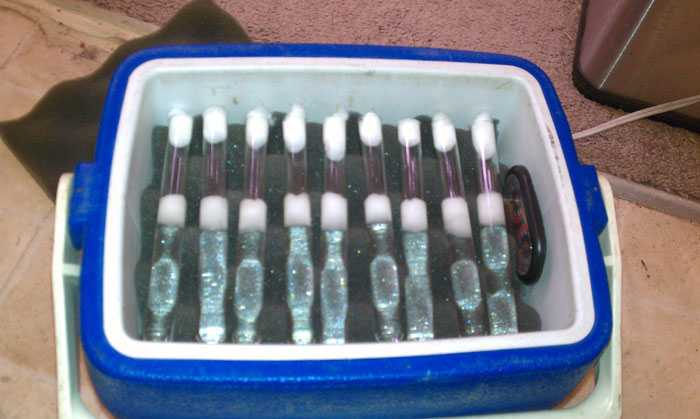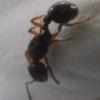Here's what I do for the test tube/container situation. I bring a little cooler with all my test tubes already made up and laying inside on some of that egg crate foam I use.

On the very bottom is a big plastic container filled with refrigerated water (not ice). This keeps the temperature inside the cooler very stable and around room temperature when in a hot car. I carry small containers with me for putting the queens I find in. Once I've used up all the containers in my pocket, I make a pit stop at my car to transfer what I have into the test tubes, and head out for more. This way you get the queens into the test tubes right away, but you aren't carrying them around in your pocket which is not a good idea if they're glass. It's also a little hard to carry a lot of them in your pocket. Many times I have queens that start laying eggs just minutes after putting them in a container, and this way I don't have to try to move those eggs later. It also can get very hot and dry in the containers in your pocket which can lead to them dying before getting them home.
I too bring a trowel with me in case I want to dig up a founding chamber or something. I have one of these (http://www.amazon.co.../dp/B0013KTADE/). It's nice because it fits in your pocket, but I will say, after digging a lot with it, your hand will start to hurt.
If you ever plan to dig up a whole colony, bring an aspirator, and a jar already lined with Fluon. That way as you suck up the ants, you can just dump them into the jar with the lid off, and nothing comes back out. That makes it much easier.























